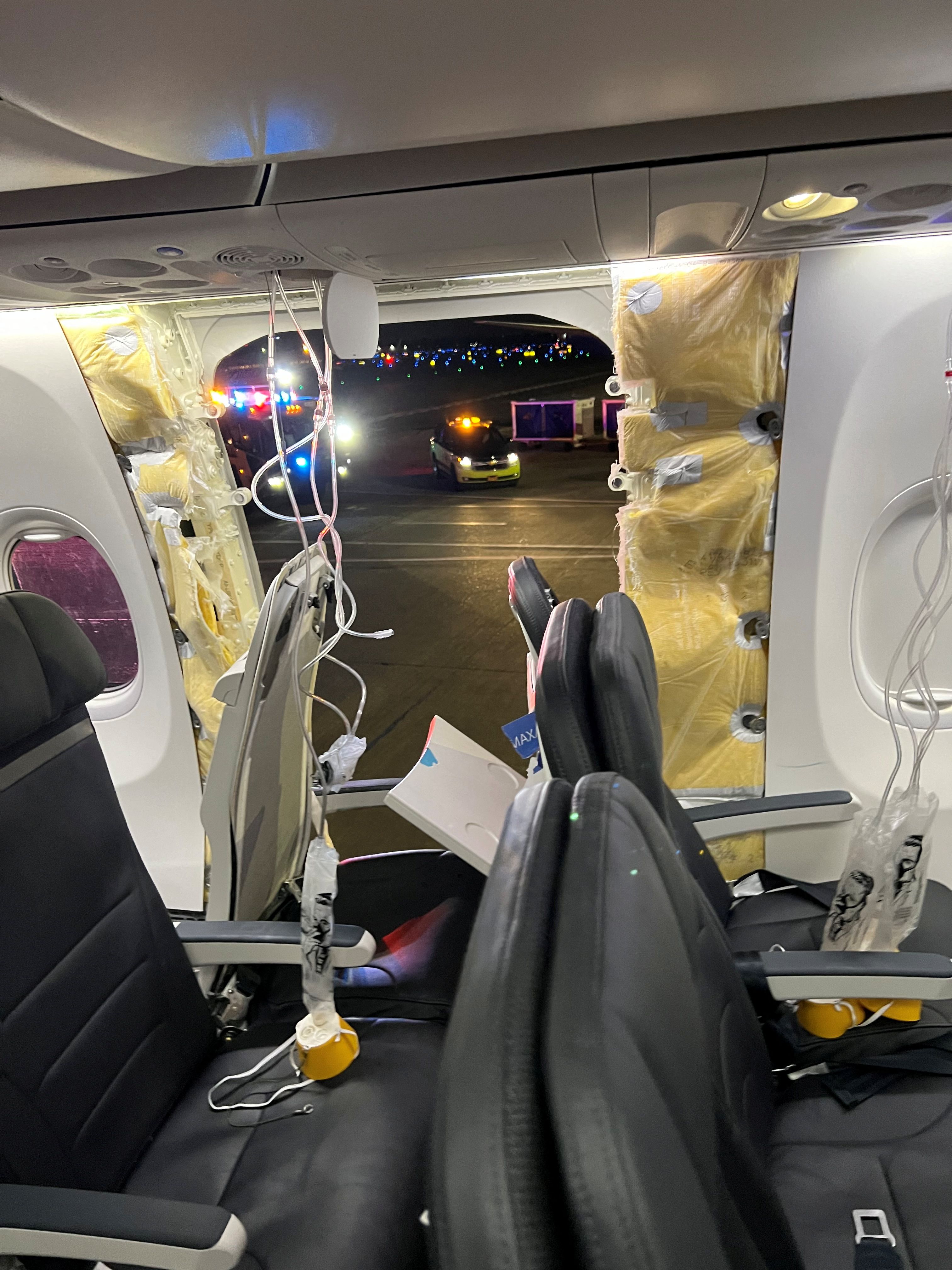When Calm Turns to Crisis: The Alaska Airlines Flight 2221 Incident
What began as a quiet, routine journey quickly turned into a test of courage and composure. Alaska Airlines Flight 2221 departed from Oakland, California, bound for Portland, Oregon — a short trip that soon became the center of national attention.
At 30,000 feet, a male passenger reportedly suffered a severe psychotic episode, turning violent and creating chaos inside the cabin. Passengers screamed as he lunged at others without warning, forcing the crew to react with precision and calm under immense pressure.
The incident could have spiraled into disaster — but it didn’t. Because of quick thinking, teamwork, and training, tragedy was averted.
Moments of Fear, Acts of Courage
According to witnesses onboard Alaska Airlines Flight 2221, the situation escalated within minutes. The man’s behavior grew increasingly erratic, and he began physically attacking nearby travelers. Panic spread, but flight attendants quickly took control, calling on nearby passengers for assistance.
Using seatbelt extenders as makeshift restraints, the group managed to subdue the individual until the plane could safely land. Throughout the ordeal, the crew maintained calm communication with the cockpit, ensuring that the flight path remained stable and passengers stayed safe.
When the aircraft finally touched down in Portland, local law enforcement and medical responders were waiting. The passenger was immediately taken into custody for a mental health evaluation, and thankfully, no physical injuries were reported.

The Importance of Preparedness and Teamwork
The Alaska Airlines Flight 2221 incident is a powerful reminder of how training, teamwork, and mental composure can save lives in unpredictable situations. Airline crews undergo extensive safety and crisis management training, but true readiness is tested only in real emergencies — and this team passed with flying colors.
Quick cooperation between the cabin crew and passengers showed how vital collective awareness is in maintaining safety onboard. It also underscores the importance of mental health support, as more incidents involving mid-air psychological breakdowns have emerged in recent years.
A Broader Message About Mental Health and Travel
Beyond the immediate heroism, this story sheds light on a deeper issue: the intersection between mental health and aviation safety. Airlines are increasingly working to train staff on how to recognize and de-escalate psychological crises.
Alaska Airlines Flight 2221 proves that not all emergencies are mechanical or technical — some begin within the human mind. The ability to handle such moments with compassion and professionalism reflects the evolving nature of aviation safety in the 21st century.
Experts note that while aviation remains statistically the safest mode of transport, airlines must adapt to new challenges that include passenger well-being and in-flight psychological events.

Final Reflection
What could have ended in tragedy became a story of resilience, empathy, and professionalism. Thanks to the crew’s calm presence of mind and the cooperation of brave passengers, Alaska Airlines Flight 2221 landed safely — and everyone aboard walked away unharmed.
This incident reminds us that safety in the skies is not only about equipment and procedures but also about human courage and quick judgment.
At 30,000 feet above the ground, ordinary people became heroes — proving that preparedness and kindness are just as vital as any safety manual.




